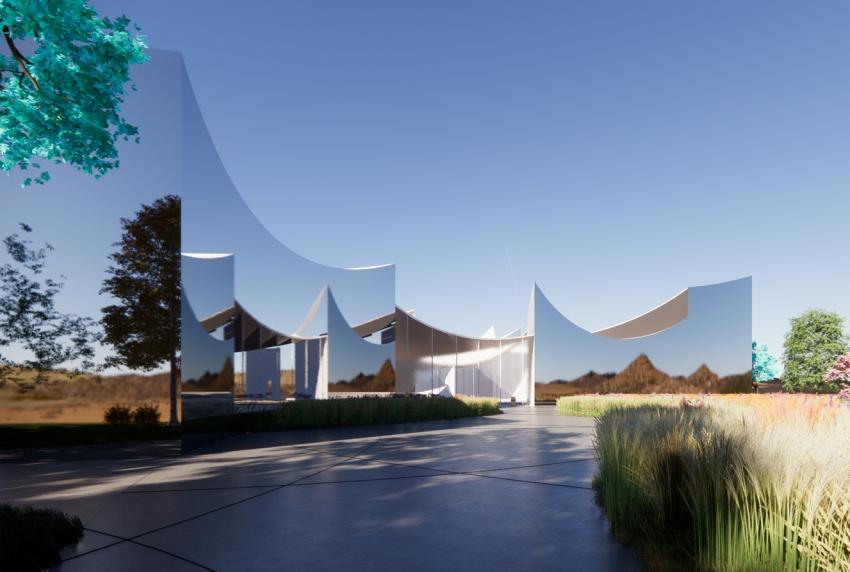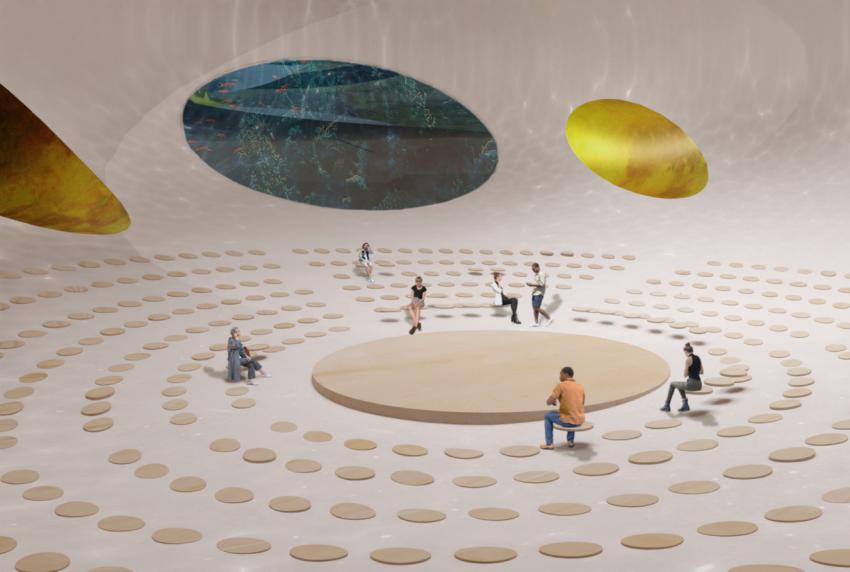Grimshaw/HWKN/Farshid Moussavi/WHY
Online
United States
Tenderstream member Grimshaw among firms designing communal space for pax.com
Online metaverse pax.world has united with world-leading architects - including Tenderstream member Grimshaw, alongside HWKN, Farshid Moussavi & WHY - to create virtual culture and commerce hubs inspired by the ancient Silk Road. The four vast hubs called ‘metaserai’ are envisioned as the building blocks of the world’s first true virtual society.
pax.world founder Frank Fitzgerald was inspired to build the metaverse during lockdown, conceiving the platform as a virtual space in which people are inspired to do business, socialise and experience culture. The virtual island is divided into thousands of plots of land, on which landowners can build, trade and host events. The idea of spaces to host these activities was informed by the caravanserai of the ancient silk road, which became hubs for trade and cultural exchange.
Grimshaw’s design takes its cue from the predominant architectural features of the caravanserai - a simple structure formed around a central courtyard and watering point. Cuboid in form, the metaserai appears to levitate in its location, not tied to any physical structures or gravitational forces. Visitors of pax.world enter the metaserai through spherical ‘follies’ or gates and engage with other users to trigger a flow of data up through the suspended cuboid. This interaction seeds bespoke spaces within the metaserai, all generated from a kit-of-parts. This fluid, constantly shape-shifting architecture, emerging from human interaction, is dynamic and has many iterations, at a speed, scale, and breadth not possible in a physical environment.
HWKN have created a multi-level and open hexagonal form derived from the real world, yet transformed by the potential of the digital freedom of the metaverse. Sited in the rolling desert, Paxton offers concerts in a giant amphitheatre, art in its wall-less galleries, meetings in rooms open to the sky, and exercise facilities in its sculptured rooftop garden.
Farshid Moussavi Architecture have followed many of the firm’s explorations in design promoting social values in the built environment, such as inclusivity, multiplicity, and diversity, and applied them to the metaverse. Designed to be at once an enclosure and focal point for gathering, the firm’s hub is organized as a circular form, with event spaces arranged around three large circular courtyards, with open views to the communal great halls.
WHY’s Metaserai evokes a chorus of commerce and conversation reminiscent of the caravanserai which inspired pax.world. Designed around an open, public plaza at the base of a tree, the space is a harmonious celebration of natural materiality with a healthy ecosystem of grass and plants reaching across the landscape. Non-visible elements, such as those that influence auditory processing and illicit a perhaps unanticipated appreciation for depth of space, permeate throughout.
Keith Brewis, Partner at Grimshaw, stated: “Experimentation with design, technology and materials is an inherent part of Grimshaw’s history and legacy, enabling us to transform the experience and outcomes of our built environment. The metaverse is an enabler of this approach and an evolution of our current processes of design communication in the virtual world, where we take concepts from the physical to the digital and challenge ourselves, in real time, to further understand the human perception of space in architecture. Engaging with the metaverse as it matures, and working with pax.world, we are also experiencing the empowering nature of the digital world: Grimshaw’s metaserai acting as a place where users can create rather than consent to their own environments.”
Pax.com is set to launch early this year.
Lucy Nordberg
Tenderstream Head of Research
Start your free trial here or email our team directly at customerservices@tenderstream.com
Explore the Tenderstream archive here
















